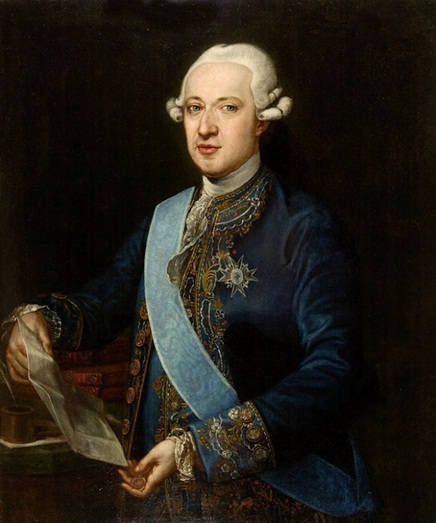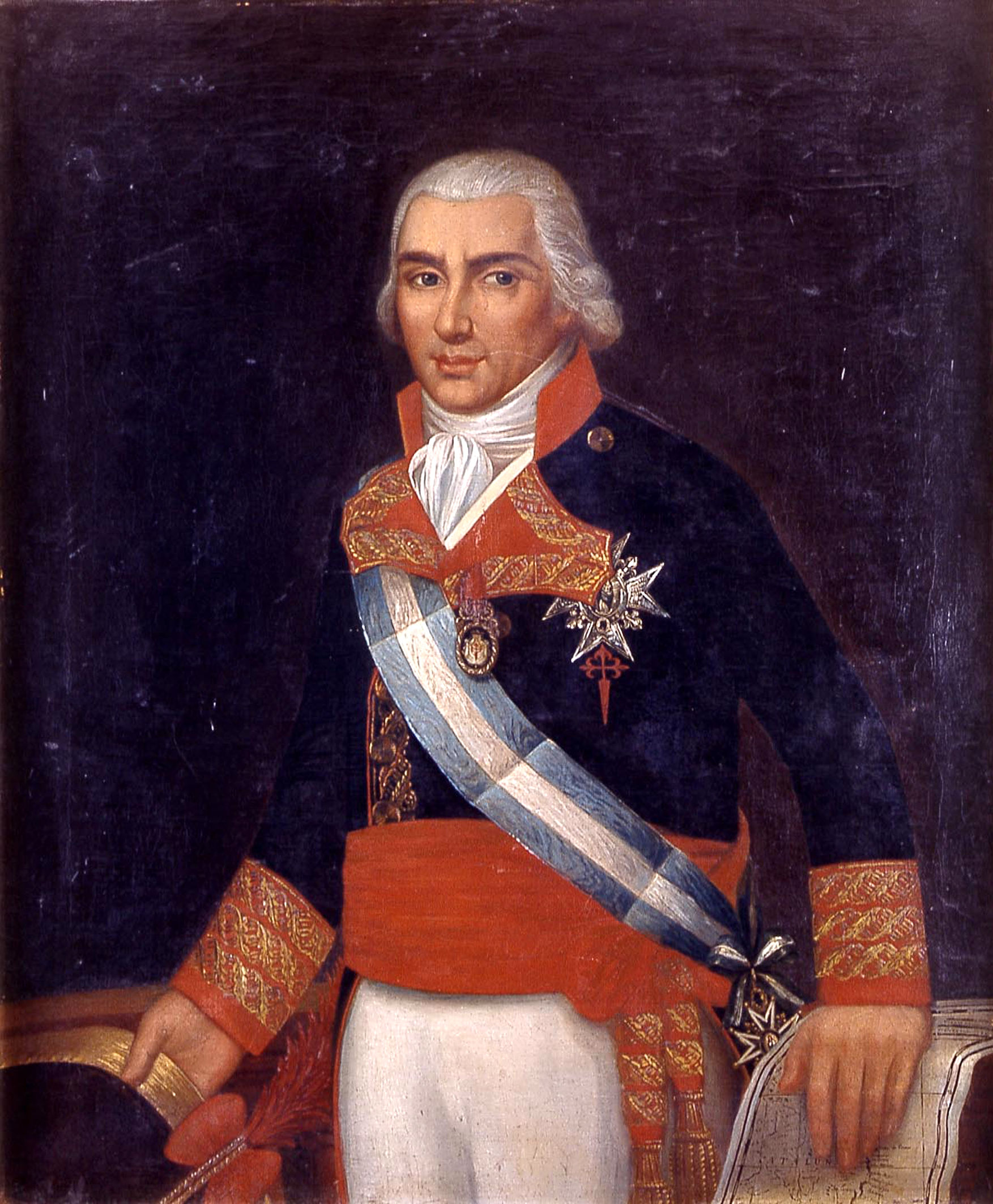 |
| Charles the III of Spain by Anton Raphael Mengs [Public domain], via Wikimedia Commons |
In the eighteenth century, there were many foreign families in Spain, but few endured over time or integrated with the local population. A very special case was that of the Wittemberg family, protected by the German emperors, which was established in the Iberian peninsula for reasons of trade. It all started in 1667 with the arrival in Malaga of the German merchant Johannes Wittemberg Dreyers from Hamburg. He was a very organized man, who soon founded a thriving shipping company, whose ships roamed the coasts of France, Belgium, Netherlands, England, Northern Germany and the Baltic ports.
Johannes was a clever man, who was also established as a banker, buying land and property, farming, exporting wine and other products of the land, maintaining good relations with local rulers, creating a business network that spread throughout Andalusia. He quickly realized that if he wanted to succeed, he needed to integrate with the local population, while narrowing ties with their foreign peers and German partners, cultivating relationships with his headquarters in Hamburg, attracting many foreign consuls to establish in Malaga as partners of the Wittemberg company.
In 1870 Johannes married María Arizón, a descendant of Spanish and Irish, with whom he had a large offspring. One of Johannes´son emigrated to Panama, but most of them remained and thrived in Málaga. Some of their children developed a thriving business activity, and most of them joined the Army, the Navy, or the clergy.
Especially skillful were the women of this family, who contracted a high-rank marriages with many members of the nobility, significantly expanding the power of this family, enabling their members to occupy key posts in the Spanish government.
As a result of their commercial activity, in a few years, this family took control of the land, owned large country farms with beautiful mansions, established prosperous international relations, got noble titles. They manage to achieve a high status and refinement. They had carriages, elaborate jewelry, fine linens, silverware, precious porcelains, delicate and elegant clothes...Their maritime company had a flourishing activity over one hundred and thirty years.
If you want to write me o comment your points
of view you can do it in the following email:
email Daniel Piedrabuena Ruiz-Tagle
Especially skillful were the women of this family, who contracted a high-rank marriages with many members of the nobility, significantly expanding the power of this family, enabling their members to occupy key posts in the Spanish government.
As a result of their commercial activity, in a few years, this family took control of the land, owned large country farms with beautiful mansions, established prosperous international relations, got noble titles. They manage to achieve a high status and refinement. They had carriages, elaborate jewelry, fine linens, silverware, precious porcelains, delicate and elegant clothes...Their maritime company had a flourishing activity over one hundred and thirty years.
At the end of the century their company was dissolved, but the prestige of the family continued until the late nineteenth century, enabling great social progress, achieving to become related to Spanish grandees.
Member of this German family by his mother side was Luis Joseph Velázquez de Velasco, Marquis of Valdeflores (1722-1772), member of the Royal Academy of History, a key figure in the early Spanish Enlightenment, whose “Geschichte der Spanischen Dichtung” was translated in 1769 by professor Andreas Dieze in Gottingen, and in 1860 Emil Hübner, member of the Die Königlich Preussische Akademie der Wissenschaften zu Berlin, took advantage of the many epigraphic gatherings of Valdeflores to form The Corpus Inscriptionum Latinarum. Velázquez, well educated and a member of many academies, was involved in the most important literary movements and cultural projects of that time. He is known to be the first who introduced the neoclassicism in Spain, and one of the youngest who undertook a scientific journey through the peninsula to gather their antiquities.
Another proof of the great importance of this family is that it got related to the County of Floridablanca, which was originated by Don José Moñino Redondo, later I Count of Floridablanca, one of the most important politicians of this time, secretary of state of King Charles III, and later on, of his son, Charles IV.
We also have the case of Juan Pedro Coronado Wittemberg, another member of this family, which fought alongside with Francisco Gravina, navy commander in chief around 1810.
 |
| Probably by Francisco de Goya (1746-1828) [Public domain], via Wikimedia Commons |
We also have the case of Juan Pedro Coronado Wittemberg, another member of this family, which fought alongside with Francisco Gravina, navy commander in chief around 1810.
 |
| See page for author [CC BY-SA 3.0 (http://creativecommons.org/licenses/by-sa/3.0) or Public domain], via Wikimedia Commons |
Thank you
If you want to write me o comment your points
of view you can do it in the following email:
email Daniel Piedrabuena Ruiz-Tagle
The family Lisperguer Wittemberg split in two continents America (Perú, Chile and Argentina) and Europe (mainly Spain). If you are interested in the 18th century Spain, this is the work that you may consider: Los Lísperguer Wittemberg: una familia alemana en el corazón de la cultura chilena: Identidad y esplendor de la primera familia colonial de Chile. Despite the title, 60 % of this work has to do to 18th century Spain.
I have also published a second volume focused in the 16th century Spain, fascinating too if you are studying the Spanish Empire or the Holy Roman Empire. The title is "El conquistador alemán Pedro Lisperguer Wittemberg: De cortesano de Carlos V y Felipe II a célebre conquistador de Chile" and is available in several retailers in its digital version. Thank you. DPR.
Very recently I have also written an article about the origin of the Lisperguer family in the Atenea magazine. To read the article click here:




No hay comentarios:
Publicar un comentario